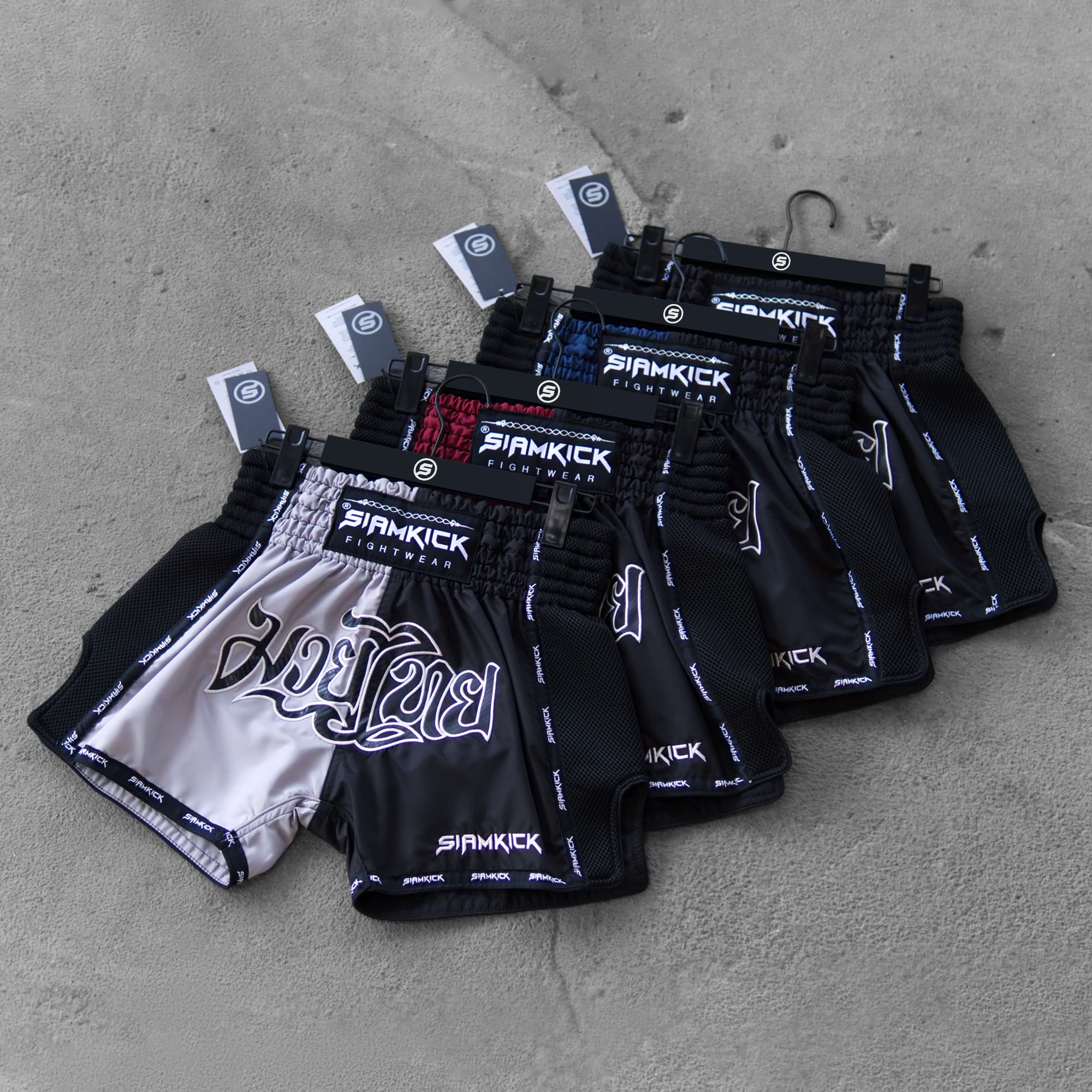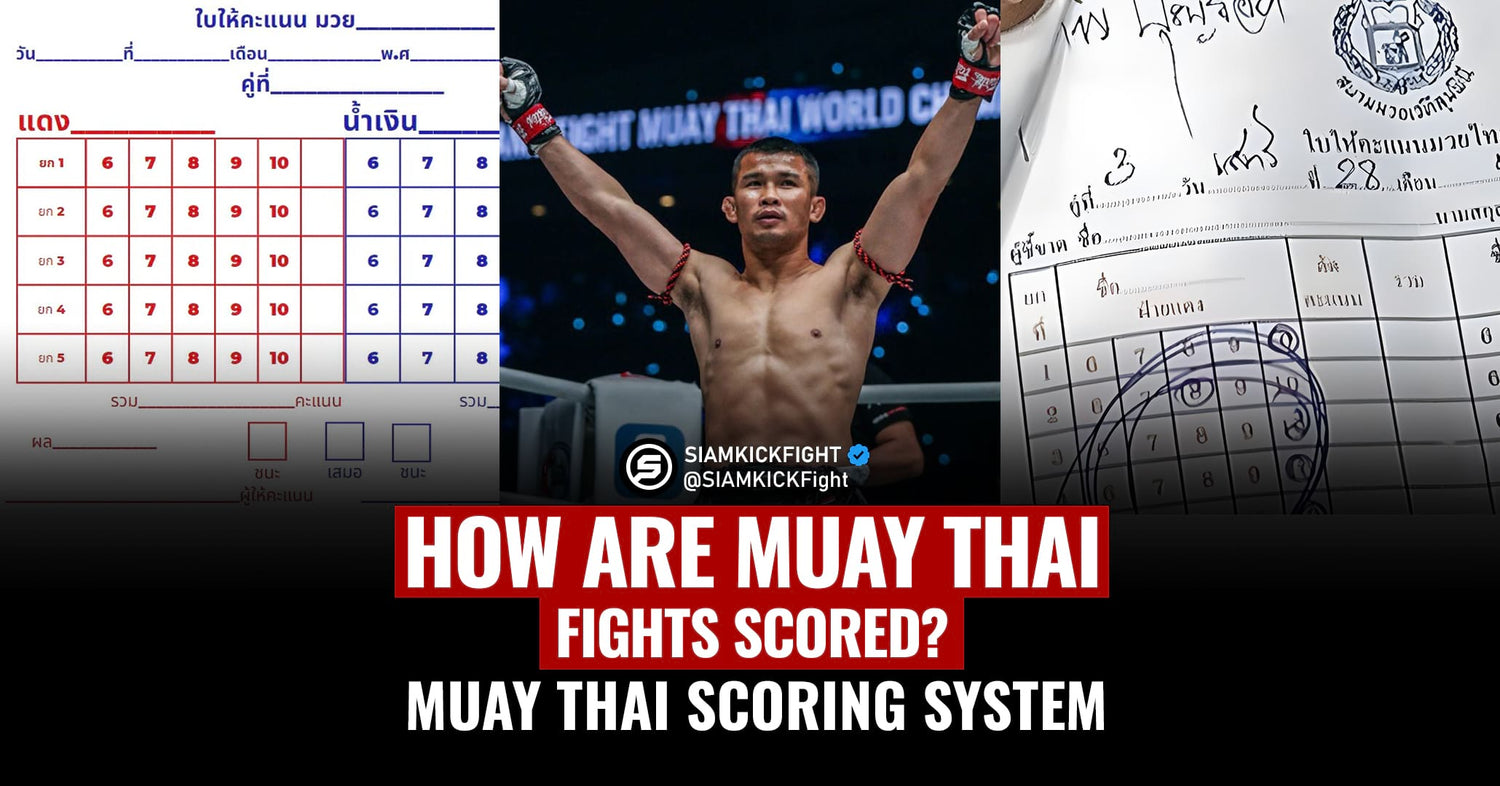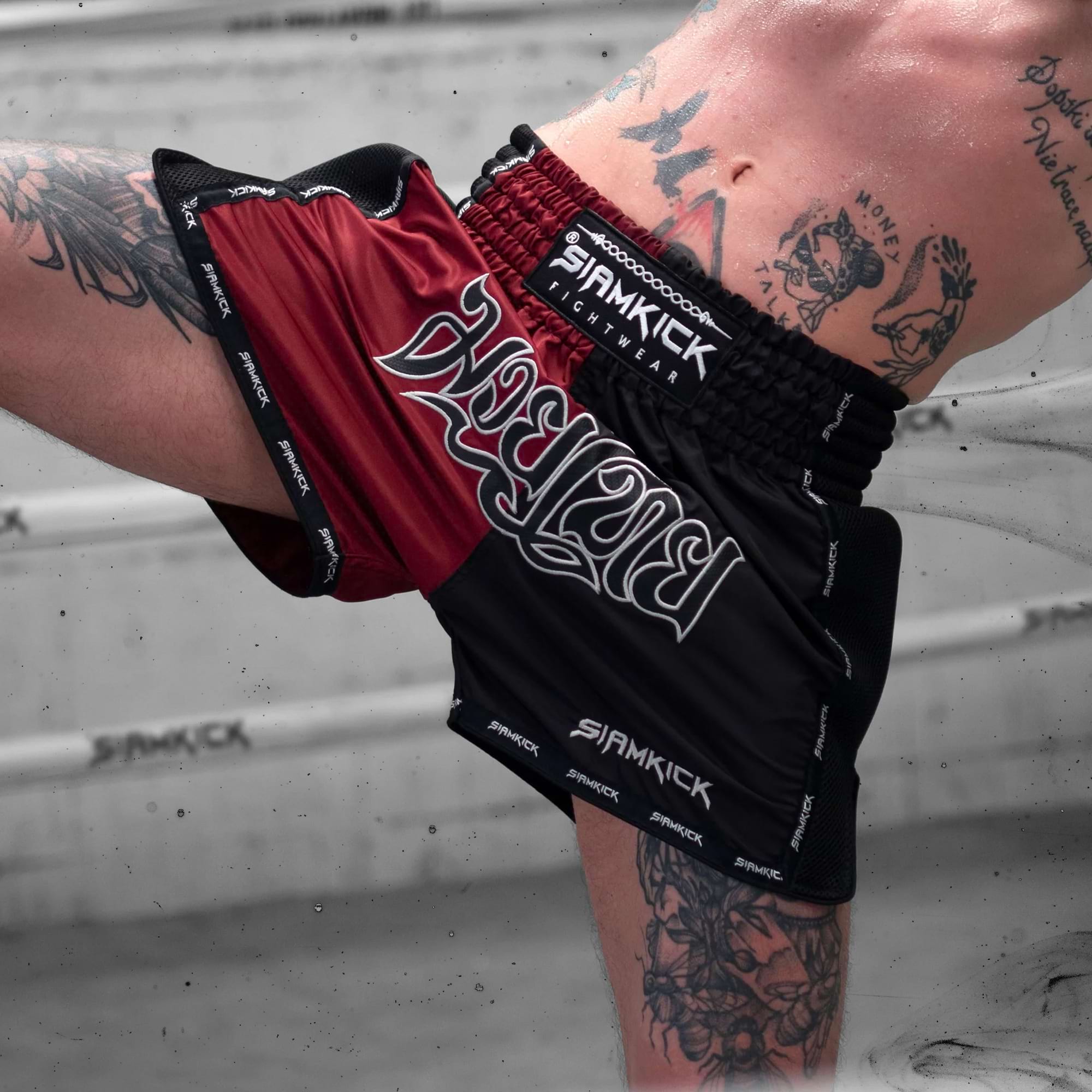Table of Contents

Introduction
Understanding the scoring system in Muay Thai is crucial for both practitioners and spectators alike. Muay Thai's scoring system differs from other combat sports like boxing or kickboxing. As such, fight fans who are used to the usual round-by-round 10-point must system tend to get confused about the outcome of a Muay Thai fight and how it is scored.
Appreciating the scoring system enhances the experience of watching Muay Thai fights, allowing fans to observe the subtle complexities of each exchange and gain a deeper appreciation for the athletes' abilities. Here’s a comprehensive guide to the Muay Thai scoring system and what judges consider when determining the outcome of a fight.
Traditional vs. Modern Muay Thai Scoring Systems

Muay Thai's scoring systems have evolved over time, reflecting changes in the sport's competitive landscape and the need for standardized judging criteria. While both systems have their merits, the adoption of the 10-point must system has helped standardize judging criteria and enhance the transparency and consistency of scoring in Muay Thai competitions.
Traditional Muay Thai Scoring:
- In traditional Muay Thai, fights are judged based on a broader assessment of a fighter's performance over the entire duration of the bout.
- While clean strikes and aggression are important, they were evaluated in the context of the fighter's overall performance, strategy, and resilience.
- The final moments of a fight is very important in traditional scoring as it places considerable weight on the overall impression a fighter leaves on the judges.
Modern Muay Thai Scoring (10-Point Must System):
- The 10-point must system, borrowed from boxing, was introduced to Muay Thai to provide a more standardized method of scoring fights.
- Under this system, judges score each round independently. The cumulative scores from each round determine the overall winner of the bout.
- Factors such as clean strikes, effective aggression, ring control, and defense are still considered, but within the context of each individual round.
- Popular fight promotions like ONE Championship uses this type of scoring in both their Muay Thai and Kickboxing fights.
- Read more about the 10-point must system below.
What do judges look for? The Basics of Muay Thai Scoring
While aggression and volume of strikes are important, they aren't the sole determinants of victory. Instead, judges focus on the quality and effectiveness of techniques demonstrated by the fighters. While the overarching goal remains to identify the fighter who demonstrates superior skill and effectiveness, this is broken down into several key factors, prioritized from most important to least important:

Clean Strikes
- Clean strikes refer to techniques executed with precision, accuracy, and force. These include punches, kicks, elbows, and knees that land cleanly on the opponent's body or head.
- Merely making contact is not sufficient; strikes must visibly affect the opponent or demonstrate control over the engagement.
- Judges particularly favor strikes that visibly affect the opponent, such as causing them to stagger, lose balance, or display signs of injury.

Ring Control
- Effective ring control not only showcases confidence and assertiveness but also limits the opponent's opportunities to launch effective attacks.
- The fighter who dominates the center of the ring, dictates the pace of the bout, and controls the distance is often favored in scoring.
- Judges observe which fighter maintains positional superiority, cutting off angles and preventing the opponent from establishing control.

Effective Defense
- Effective defense involves evading, blocking, checking, or parrying incoming strikes while minimizing damage and maintaining composure.
- Counterattacking immediately after defending an opponent's strike highlights the fighter's ability to turn defense into offense and is often favored by judges.

Aggression
- Judges look for fighters who apply pressure, push the pace of the fight, and seek to impose their will on the opponent.
- Aggression without precision or technique may not earn as many points, as judges prioritize quality over quantity. It's not about blindly charging forward but rather about strategically applying pressure while maintaining composure.

Damage Inflicted
- Judges consider the visible damage inflicted on the opponent throughout the fight. Strikes that result in cuts, bruises, or visible swelling are taken into account when scoring rounds.
- Inflicting significant damage demonstrates the fighter's power and effectiveness, which can sway judges' scores in their favor.
Different Techniques and their Scoring Potential
In Muay Thai, each technique carries its own scoring potential, and understanding how judges evaluate these techniques is crucial for fighters aiming to secure victory. Here are some key techniques and their impact on scoring, ranked from most impactful to least impactful:

Elbows and Knees
- Elbows and knees are among the most devastating techniques in Muay Thai and carry significant scoring potential.
- Landing elbows and knees with precision, targeting vulnerable areas such as the head or torso, can sway judges' scores in favor of the attacking fighter.
- These close-range techniques require skill and timing to execute effectively, but when done right, they can cause immediate damage and tilt the momentum of the fight.

Roundhouse Kicks
- Roundhouse kicks delivered with precision and power to the opponent's body or head are high-scoring techniques.
- Judges pay close attention to the impact of these kicks, looking for visible damage or disruption of the opponent's balance.

Sweeps / Throws
- When executed cleanly and with control, trips and throws can impress judges and score highly, especially if they result in the opponent being grounded or losing position.
- Fighters who demonstrate proficiency in trips and throws showcase their technical skill and tactical awareness, earning scoring opportunities even in close-quarters combat.

Clinch Work
- Judges look for active engagement in the clinch, with fighters seeking to control the opponent's posture, land knee/elbow strikes, or throw them off-balance.
- Effective clinch work requires a combination of strength, technique, and strategy to score points and wear down the opponent over time.

Leg kicks / Teeps (push kicks)
- Leg kicks wear down the opponent’s mobility, while teeps are used for distance control and disrupting the opponent’s rhythm.
- These aren’t the hardest techniques to land and therefore, do not score very high.
- While these 2 techniques may not always receive high scores individually, the accumulation of these techniques throughout a fight can cause a significant difference in the scorecards.

Punches
- While punches are fundamental strikes in Muay Thai, they are generally the lowest-scoring techniques compared to kicks, elbows, and knees.
- However, punches alone may not accumulate as many points as other techniques unless they visibly affect the opponent or are part of a combination attack.
Understanding the 10-Point Must System
The 10-point must system is a scoring method widely used in combat sports to determine the winner of each round. Under this system, judges assign a score to each fighter based on their performance in the round, with the winner receiving 10 points and the loser a lower score, typically 9 or fewer. Here's how the 10-point must system works in the context of Muay Thai:
Winning a Round
- The fighter who demonstrates superior skill, technique, and effectiveness in a round is awarded 10 points by the judges.
- This doesn't necessarily mean the fighter has to dominate the round completely; rather, they must outperform their opponent to earn the full 10 points.
Losing a Round
- The fighter who is deemed to have lost the round receives a lower score, usually 9 points or less, depending on how badly the fighter performed in that round and if there were any knockdowns.
- Factors such as being on the defensive for the majority of the round, receiving significant strikes, or being less effective in terms of clean, impactful techniques can lead to a lower score.
Even Rounds
- In some cases, a round may be too close to call, with both fighters performing evenly.
- In such instances, judges may score the round 10-10, indicating that neither fighter had a clear advantage.
Accumulation of Scores
- Scores from each round are tallied cumulatively throughout the fight.
- At the end of the bout, the fighter with the higher total score is declared the winner.





























